Warlock 2: The Exiled has only just been released by Ino-co Plus and Paradox Interactive, but fans of their 2012 release Warlock: Master of the Arcane may find themselves suffering from an extreme case of deja vu with this one. While new content has certainly been added, the additions feel closer to an expansion than a sequel. With such similarities between the two titles, it’s also fair to say that it contains many of the same pros and cons of its predecessor. While we didn’t review Warlock: Master of the Arcane, across the board it received relatively average to fair marks amongst critics. Have the improvements made in Warlock 2 changed an average game into a great one?
Key Features of the Warlock series
The Warlock series are fantasy, light strategy, turn-based games set in the world of Ardania. The artwork and graphical effects are bright and colorful compared to many strategy games, and this vibrant style does a good job bringing the whimsical world, one it shares with the Majesty series of games, to life. Throughout the game, text descriptions, unit types, and dialog all carry forward the very light hearted and often silly theme. If the idea of donkey riding Stubborn Knight units, heroic rabbits, and occasional pop culture references are a turn off for you, Warlock is a series you might want to skip.
While similar to many other fantasy turn-based strategy games, there are a few elements that make the series stand out such as its unit development and city building system. One of the biggest differentiators is that they use the one unit per tile system, also known as 1UPT, for both movement and combat. There are no traditional army stacks and there is no separate tactical mode for combat in either Warlock game. Combat takes place on the strategic map in a manner similar to Firaxis’ popular game, Civilization V.
What’s New In Warlock 2
Warlock 2 introduces some changes to the standard Warlock formula. The biggest difference is certainly the new game mode called “The Exiled”.
The second biggest change is with the spell research system. A new spell research tree has replaced the random research system used in the original Warlock. With three branches to choose from and a wide variety of spells in each, the player can now plan ahead and unlock only the spells they need to in order to complete their strategy. One of these branches is highly reliant on building a relationship with the specific gods present in the Warlock universe, and this adds additional considerations and planning. Having experienced both games’ research systems, I have to say I really enjoy the changes present in Warlock 2.
Warlock 2 includes 14 great mages, quite a few of which are new to the series. Many of the great mages in the original game either died, disappeared, or swore allegiance to Warlock 2’s primary antagonist, the United One. Several others do return, either in their original form or even as descendants of the original mages. The mages themselves are rather a motley crew, comprised of humans, undead, monsters, and even rats.
Along with the new great mages, 2 new races have also been added to the series. The Planestriders and Svarts join the Humans, Undead, Monsters, and Arethi Elves (available via DLC in Warlock) to bring the total up to 6. Every race has unique units and quite a few unique buildings. The developers have done a good job of including multiple interesting races whose diversity is typically more than skin deep.
If you choose to upgrade your game to the “Great Mage” edition, for an extra fee, you’ll unlock quite a few items external to the game, such as the soundtrack, digital artbook, and digital novel. In addition, there is a new great mage, a dragon, that has an entirely unique playstyle because he is his own capital city. Unlike other great mages that don’t appear on the map, this mage does. Finally, this “Great Mage” edition also includes some new heroes and spells. I didn’t experience any of these, but one has to question whether they justify an asking price of 66% of the full game’s price. While I don’t feel the full game is lacking in content in these areas, I did find including the most unique great mage in the game in a launch DLC to be a great disappointment and perhaps a bit greedy.
Forging a World – Game Setup
In Warlock 2, you take the role of a great mage, and alongside other great mages, you will compete to fulfill certain victory conditions before your rivals. Each of the great mages comes equipped with some starting traits and a race. If you’d rather design your own, you can select to customize a specific mage and adjust their traits and race to your liking. While some traits offer simple +x% bonuses, others offer more interesting perks that can provide you with specific resources or advantages at the start of the game.
World creation in Warlock 2 is fairly simple. You simply select a world size and a number of opponents. You will also select from one of five difficulty levels ranging from relaxed to impossible, and this controls the difficulty of your opponents. Monster spawns can also be adjusted, so you can tune the number of random monster occurrences down to 1/5th of normal all the way up to 2x normal.
Warlock 2 shipped with two modes of play including the new Exiled mode, and the standard Warlock 1 style sandbox mode. The sandbox mode is very similar to the original single shard mode in the original Warlock. You and your opponents start on a single shard and try to achieve supremacy via one of the victory conditions. While this mode includes portals to other realms, these certainly play a much smaller role than they do in the Exiled mode.
Post-release, Warlock 2 also introduced a 3rd mode called Battle for Outplanes. This mode offers a nice compromise for players who may not want to play through the story elements of the Exiled mode, yet still want to experience the multiple tiered difficulty shards.
The final thing to consider before starting the game are your available victory conditions. Warlock 2 has 4, or 5, that can be activated or disabled depending on the mode. There is of course a standard “Defeat the Great Mages” mode, and in this mode you must capture your rival mage’s capital to win. The game allows you to quickly eliminate opponents without hunting every one of their cities down, which is an aspect I greatly appreciate. A second victory condition is the classic ultimate spell victory, and this takes a good amount of time to cast and can be interrupted by your rivals. A third victory condition involves capturing all of the “Holy Grounds”, which are special tiles on the map. You must have control of all of these in order to win this way.
The two most original victory conditions present in Warlock 2 are the “Defeat an Avatar” and “Defeat the United One” conditions. Defeating an avatar involves building certain religious buildings for certain gods, as well as performing certain actions that will anger other gods. In this manner, it is possible to upset some gods so much that they will send their avatar into the world to fight against you. If you can defeat this powerful enemy, you win the game. Defeating the United One is a new victory condition to the series and is available only in the Exiled mode.
The Exiled
The new Exiled mode is a slightly more structured experience with light RPG elements. In the Exiled mode, you will be conquering multiple shard planes of ascending difficulty until you make your way to the final shard of Ardania and defeat the “United One”.
The Exiled mode is a more story driven experience than the sandbox game. As you play the game in this mode, new story based quests and challenges will be presented for you to complete. In addition to the standard “build this” and “make this god happy” type of quests, this main story quest line will demand your attention. The challenges presented don’t have firm time limits, but that is not the same as saying they don’t have ways of motivating you to move forward on them. In general, failing to act on a story quest in a timely manner can result in some negative consequences upon your empire, up to and including spells and monsters that will be used against you. These story missions contain voice acting and are pretty interesting the first time or two you encounter them. Overall, I enjoyed them, but I can’t see them remaining interesting in subsequent playthroughs.
The other key element of the Exiled mode is how the shards work. The shards operate in an almost hub and spoke type manner. The initial shards, at the top of the map, have just one way in and out. To move back and forth between shards, you will need to use one of these portals which are scattered about across each shard. Later shards will have multiple portals connecting to multiple shards. The portals between these are generally locked closed at first, but unlocking them isn’t very difficult. If you are willing to deal with some short term consequences, or to spend some resources, you can generally open them pretty easily via a dialog selection.
As you travel between shards, you will notice that the difficulty of the environmental threats starts to increase. To get to Ardania, you will need to travel through most of, but not necessarily all of, the available shards. Some of the shards are great mage home shards similar to your own, and visiting these is not required unless you choose to. As you get closer to Ardania’s shard, you will begin encountering more powerful and vicious beasts. Early on though, you will be able to gain experience and loot by defeating bears, rogues, and other generally mild threats. You’ll also likely run into your AI wizard opponents once you’ve ventured out a shard or two from your home.
The Exiled mode is an interesting addition to the series. It injects story elements into the game, but also manages to still feel very similar to the sandbox gameplay player’s enjoy. Other than the shard layout and some specific quests, you are free to build cities and build your empire as you see fit without restrictions. I found this mode enjoyable, but it wore thin after only a couple of plays. One of the main story quests involves spending a large amount of time and energy, as well as resources, and it feels like it forces you down a specific path, at least for a while. The main victory condition of the Exiled Mode, to defeat the United One, had a lot of build up, but ultimately felt anti-climactic when I achieved it.
Other victory conditions can also be enabled in the Exiled mode, and I found in other plays that I was able to win much easier by simply conquering my opponents. I actually won this way accidentally my first time through the mode by conquering the other great mages. The “United One” victory is going to be something you pursue purely to see how it plays out. If you end up disappointed with it as I was, you likely won’t bother with that route again and will simply choose one of the other victory conditions as your goal.
Constructing an Empire
The Warlock series offers a city building system that is quite interesting. City size, as controlled by its population, is a limiting factor in how many buildings you can construct. It is therefore not uncommon to go multiple turns without constructing anything in a city. This makes each decision rather important, as you may really want a new unit production building, but you may really need some more gold or food production. You’ll only get to pick one, and it could be several turns before you have a chance to build again. While upkeep costs vary, each building is completely free to construct, so your choices are truly unlimited amongst the options available to you at the time. Once you’ve made the decision, perhaps to build a farm, you will want to select a fertile location that will provide additional food production if you place a farm there. You may instead find that the only available building spots have an upkeep penalty due to a nearby volcano. So even once your decision is made, optimal placement is also a factor.
In addition to the more common buildings, Warlock 2 also has a large variety of special resources on the map that will also offer unique building options, from pumpkin patches, to spider hatches, to minor faction villages, and even dragon eggs. If these fall within your city’s borders, you’ve got some additional decisions to make. The interesting thing about these locations is that they often offer 2 compelling building choices, but ultimately you can only choose one of these two. Do you want a silk workshop so you can provide magic resistant robes to your mage units, or do you want the spider hatcher so you can start recruiting spiders? Do you want access to a variety of dwarven units, or would you rather build a dwarven armory to provide income and upgrades to your existing units and heroes?
When deciding between these unique buildings, it is important to remember your unique racial buildings. Every race has a set of unique units and unit production buildings. Each of these buildings unlocks a new unit or two, and each also tends to serve as a prerequisite for a higher tier race specific building. There are no standard or common units shared by the factions other than the basic settlers, and even these look different. Unless you’ve got a special village nearby, or some powerful unit producing resource you can exploit right away, you’re very likely to find yourself working your way up the chain to unlock the higher tier buildings. In my experience I’ve found that multiple different unit paths are possible per race, so you can often emphasize melee, ranged, or magic depending on your preference.
Warlock 2 has taken a somewhat unique path on city spamming as well. You are only allowed to have a specific number of cities before your revolt risk starts rising. This can be adjusted through research, but it also can be circumvented through city conversion. At almost any time, you can take your cities and convert them into dedicated fortresses or even shrines to one of the gods. You no longer have to manage construction queues in these locations, which does reduce their usefulness, but you can also get nice rewards while at the same reducing the amount of cities you need to micromanage.
When it comes to city building, I really like what Warlock 2 has done. In many fantasy strategy games, city building starts off rather interesting and quickly becomes dull and repetitive. In these games, there is generally a best build order depending on your goals. You also often have to babysit them every few turns or build up a long queue in advance in order to get on with other aspects of the game. Warlock 2 eliminates this issue by providing interesting and varied decisions that depend on both the city’s available resources, as well as your current resource generation and upkeep costs. It also reduces city spam and together these systems allow your focus to remain on exploration and combat rather than city planning. This makes each turn shorter and snappier, which seems very appropriate for a lighter strategy war game like this one.
Combat and Unit Variety
Warlock 2’s combat lacks many of the tactical considerations found in other titles within the genre, yet still manages to present some compelling combat decisions and options. It is able to achieve this by way of its unit attributes, building perks, and unit leveling perks.
Warlock 2 has a fairly large number of attributes that help make combat more involved than simply comparing one unit’s attack vs another’s defense. While this is true in a sense, it also isn’t. While most strategy games feature units with a defense value and a resistance value, not many have 6 different attack and resistance types. Melee, Missile, Life Magic, Death Magic, Spirit Magic, and Elemental Magic make up the 6 primary attacks and resistances. Having high values in as many of these as possible is hard to achieve, but is also very critical for a unit’s survival. Higher difficulty enemies often attack with multiple types of damage at once, so stacking a single resistance can often lead to a quick death. Damage is also reduced depending on how wounded a unit is, which is a mechanism that promotes spreading damage around at times rather than simply focus firing.
One way to improve your unit attributes beyond their normal limits is through the use of building perks. Building perks become available as you build specialized buildings within your cities. Some of these buildings are always available, while other buildings require nearby special resource tiles in order to be constructed. Buildings like the dwarven forge can provide a dwarven steel damage upgrade to certain classes of units. Once unlocked, building perks are instantly available to any applicable units. This is offset somewhat by a gold cost and a hard limit on the number of units you can have simultaneously with the same upgrade.
Unit advancement is achieved through a leveling system and provides an excellent selection of diverse and interesting options. As each unit gains a level, generally through combat and ability use, their attributes do not automatically increase as in some other games. Instead, each unit is presented with the choice of 3 perks and must select only one. Sometimes these perks will appear again on a future level up, but this is not guaranteed. At first, these perks are going to appear mundane and uninteresting. This is because low level and low tier unit initial perk choices tend to offer the same bonuses as the upgrade buildings do early on. On top of that, adding 30% to a damage of 11 isn’t all that exciting. Later on, however, additional perks are offered that may provide significant bonuses or even new abilities.
Thankfully, units in Warlock 2 consist of much more than the mundane swordsmen and archers that you’ll start with. Depending on your race and available nearby resources, a whole slew of potentially interesting units will soon be at your disposal. For example, you may have some Dragonsmort Guardsmen, who are a group of soldiers flying above the battlefield on their own personal hovercrafts. These powerhouses can either blast enemies with their spirit guns or heal nearby units. Or perhaps you’d prefer a bit more healing, and you’ve acquired a Witch Doctor. With its healing and regeneration abilities, they may be just what you are looking for to support your front line. Level up the Witch Doctor a bit, and soon you’ll have the option, should you choose the ability, to provide resistance auras to all nearby units, further increasing their role as support behind the front lines. Also, if an elemental magic breathing turtle, a top hat wearing werewolf, or a vampire are more your style, well, you’re in luck there too!
Heroes are also present in the game and can be leveled up and equipped with items you’ll find or create through spells. Heroes arrive and require up front payment and significant upkeep costs, but they are easily the most powerful units on the battlefield once leveled up. Higher level heroes will arrive later in the game. These can include legendary characters of unique origin with interesting tales of heroism as well as unique upgrade perks. As a counterpart to these great heroes, great villains are also present on the shards. Seeing one of these for the first time can catch you quite off guard. These neutral enemies can have hundreds of hitpoints and will devastate you if you approach them unprepared. With great challenge comes great rewards, and rescuing heroes and artifacts from these foes made me feel like I was accomplishing something. These offer a nice challenge and in actuality the only real challenges you’ll face in the game.
AI – Artificial Ineptitude
The atrocious AI of Warlock 2 feels completely untested and unfinished. Sadly, I fear the game may remain in this state as its predecessor, Warlock: Master of the Arcane, suffered from AI issues as well. The sad fact is that the other AI great mages are incapable of mounting any sort of effective strategy. On top of this, they also don’t know how to manage themselves diplomatically, and they will quite literally give you a game breaking amount of resources when you bring your military might against them.
As I mentioned, I accidently won my first Exiled mode when I completely stomped on my AI competition. To be fair, I wasn’t on the hardest difficulty on my first play. In subsequent plays, I did play against the Impossible AI, and I noticed no difference in its competence.
One of the most painful things in Warlock 2 is watching the AI meander about the map. Once you share a shard with a competitor, you will start to notice how the AI wanders units too and fro seemingly aimlessly. At times the AI will move units back and forth between a few tiles. Approach a body of water and you’ll see the AI landlubbers stuck standing next to it, unsure of what to do.
If you are truly unfortunate, you’ll sign up for an alliance with an AI mage and see the true depths of their failure. Watching my ally on his home shard, which I had to do every turn, was painful enough to force me to break off our alliance. Each turn they would move their basic units near neutral enemies only to face repeated defeat. Their heroes, weak and near death, would be placed in vulnerable positions and suffered needless deaths. The AI seemingly has no idea how to react to adverse situations or changing conditions. Rather than building up a suitable army, or upgrading to better units, or taking any other action, it would rather throw unit upon individual unit into a metaphorical meat grinder.
Final Thoughts
Warlock 2 managed to stay interesting for awhile. This was due in no small part to its unique unit design and streamlined city development. I found trying to min max units with powerful enchantments and buffs quite compelling. The units themselves are varied and unique, consisting of both the common fantasy tropes as well as more obscure and unique ones. Steamlined city development let me make the important decisions I wanted, while still leaving my focus on the exploration and combat.
Unfortunately, Warlock 2’s replayability becomes very low once you’ve conquered the most powerful neutral threats the game has to offer. As you explore new shards, you feel a sense of excitement as you wonder what new threat you’ll face. Over time though, those same super charged units you’ve had fun exploring and conquering with start to feel game breaking. What little challenge the game had is dismissed.
Sadly, the lack of AI kills Warlock 2 as a game for me. When the neutral enemies, some of which are admittedly quite powerful, provide more of a challenge than your supposed rivals, your game is going to have a hard time succeeding as a single player strategy experience. In my entire time with the game, I had one AI mage attempt to cast the spell of unity to win the game, but that was it. Others declared war on me, were crushed without taking the offensive, and eventually sued for peace with a vast amount of tribute.
Warlock 2 does include built-in modding tools, Steam workshop integration, and multiplayer. These features shouldn’t be taken for granted, and are appreciated. Personally though, I’d have preferred to have a competent single player experience before development time was spent on these features. Additional features also would have been nice, as it is hard to justify Warlock 2’s asking price for owners of the original game. At this point I’d only recommend it to diehard fans who already own the original, and I’d warn newcomers looking for a single player challenge to look elsewhere, at least at full price.
|
Space Sector score:
6.5/10
fair
|
|---|
| The Good: – Excellent variety of unique and interesting units – City design offers interesting choices while remaining easy to manage – Multiple victory conditions |
| The Bad: – Worst AI I’ve seen in a recent strategy game – Low replay value due to little challenge even at the highest difficulty – New Exiled Mode fails to deliver a satisfactory ending – Very few additions made to the Warlock series to justify full sequel asking price |
Keith Turner, also known as aReclusiveMind here on SpaceSector, has been an avid gamer ever since he first laid his hands on a Commodore 128 in the mid 1980s. He enjoys multiple computer game genres, but his primary interests are in deep strategy games, 4x games, rpgs, and action rpgs. He enjoys writing and hopes to contribute with additional reviews, previews, and informative AARs to the community. See all Keith’s posts here.
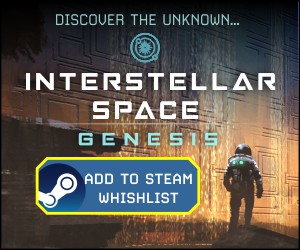
34 Comments
Related Articles:
- Warlock 2: The Exiled – New Screenshots and Information
- Sid Meier’s Civilization 5: Brave New World Announced
- Sorcerer King – Early Access First Impressions
- Eador: Masters of the Broken World Beta Preview
- Age of Wonders 3: Golden Realms Review

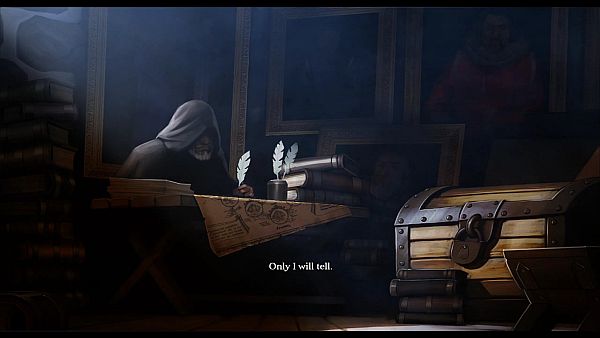
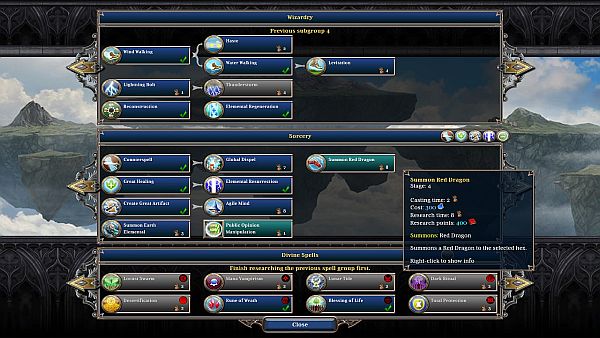
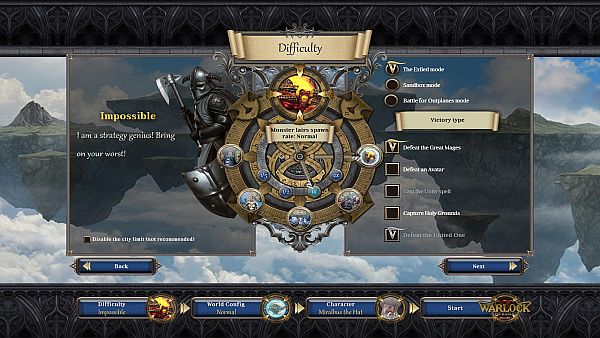
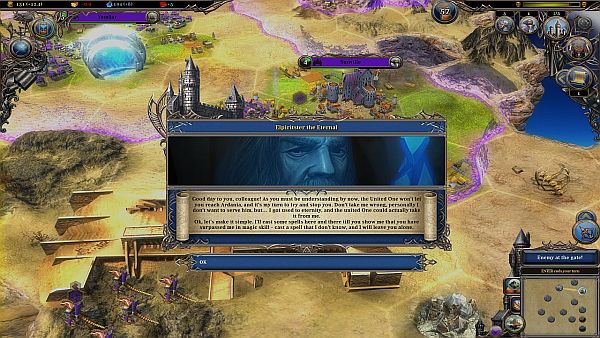
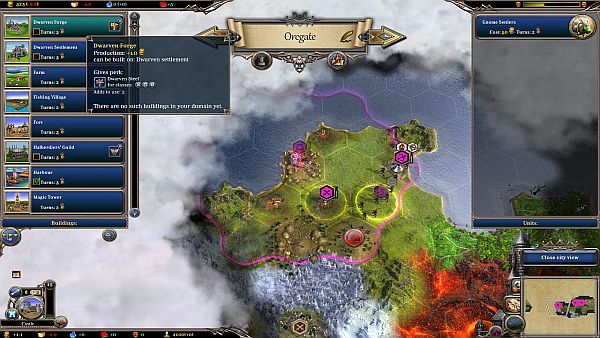
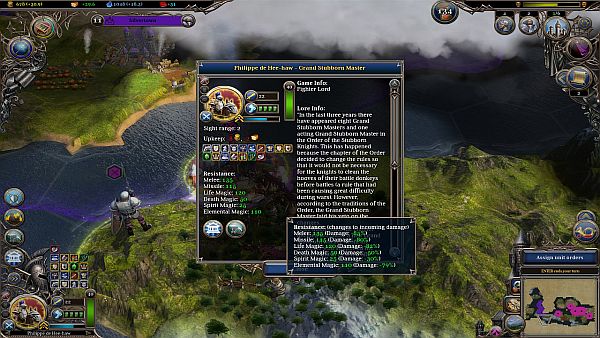
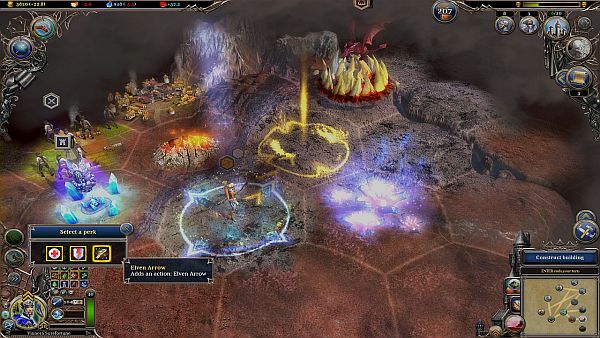
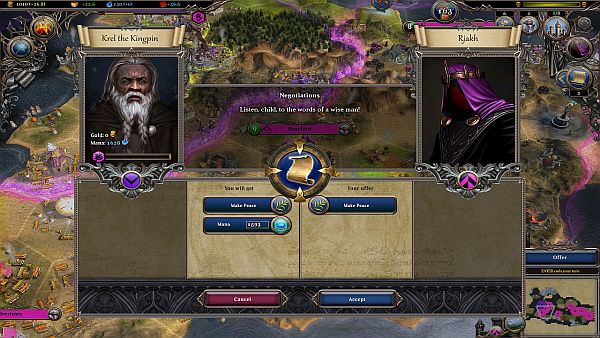
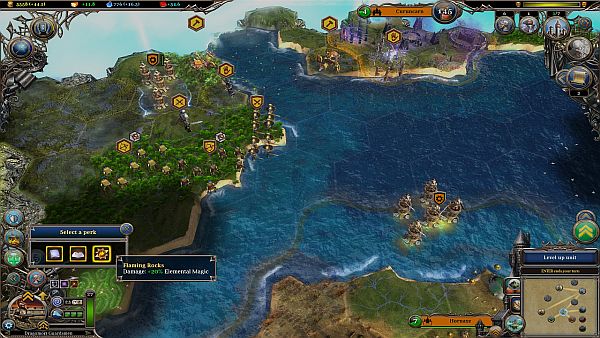

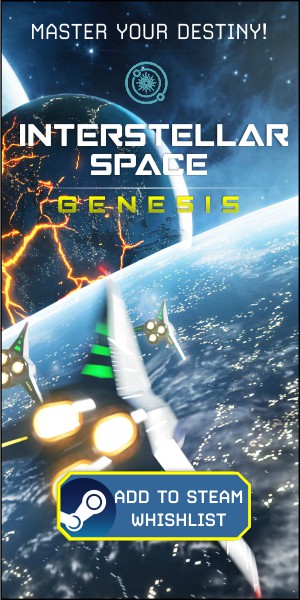
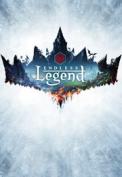

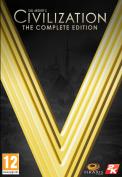


Nice review, as usual. I actually did not welcome the release of this game, albeit for a silly reason… the first Warlock was still on my backlist of games I need to finish playing through! That’s not a good feeling, seeing a new game come out when you’re not even done with the last one. Now, though, it looks like I might be better off with just Warlock 1. I have enough strategy games with awful AI, thank you.
Hell, the screenshots alone are enough to turn me away, especially the maps. It looks almost exactly like the first game! I know graphics aren’t everything for a 4X series, but for fucking out loud, they need to try harder than the Madden franchise.
Damn, you got me interested until you mentioned the horrible AI :( (appreciate it :D). I want to play an interesting (= has unique features) strategy game that has a decent AI but there’s none to be found. Well I guess FFH with Tholal’s AI mod but played that to death already that’s boring now. Let’s see if Endless legends has any decent AI. I could play multi but I’ve never had any time for it and it’s often about min/maxing cheesy strats, rushes and abusing lame OP units… it’s not fun. And I can’t even have fun with strategy games anymore just by their feature set and game mechanics (worked before @MasterOfMana, Master of Orion to name a few).
I feel you.
Heck, I wondering if at some point they should just not even bother – make the game all about overcoming neutrals under some of other threat/pressure.
But there ARE plenty of other games with challenging AI’s – they just don’t seem to be in the 4X genre lately.
Amplitude is known for making great UI, shallow gameplay and terribly brain-dead AI – just look at their Endless Space game.
I think GalCiv is about the only game in recent memory that had a challenging AI that didn’t rely on hidden bonuses.
Shucks. The design sounds awesome on paper (REALLY digging the approach described for city management), but “horrible AI” is a big turn-off for me.
Side rant regarding AI’s – people say that it’s hard to program AI’s for big 4x strategy games. I’m sure it is. But why is it that AI’s seem to be getting WORSE over the years? We should, perhaps, not expect them to be getting amazingly better, but shouldn’t AI development at least hold steady?
People are quick to point out how hard it is to do the AI – but Real-Time Strategy games (for example) seem to have no issues developing reasonably competent AI’s, another genre that relies on careful balancing of base building / resource management and war waging / aggression. Sure, those AI’s won’t beat a really strong player either, but they’ll still give you a run for your money and demand your attention. AoW3 has an amazingly “passive” AI, and it sounds like Warlock 2 is the same? Such a drag, I hope they both get improved.
I would posit that RTS games are less complicated (usually), and thus the AI requirements for them are less demanding.
A typical RTS game just needs an AI that can compete on a fixed map with a relatively small number of unit and resource types. Diplomatic options are also typically limited (if they exist at all), so AIs don’t have to worry about that, either. Finally, a RTS match is usually much shorter than a 4X game. It’s easier to program your AI *and* test it if games are only half an hour at most.
By contract, most 4X games require an AI that can put together a viable strategy – handling exploration, tech research, deal-making, juggling resources, building/moving fleets/armies, founding colonies/cities, building facilities in those colonies/cities, etc – over hundreds of turns. Not that a RTS AI is a cakewalk, but it takes a lot of work to make a competent AI in a 4X game – and a lot more work to test it.
That would be my guess as to why you’re seeing better AI in RTS games than 4X.
It’s not that AI has been getting worse per se. Games are more complex, players have higher expectations, and players are better players because it’s easier to communicate about the game.
“Good” AI is also difficult to write because it involves balancing technical and aesthetic aspects – i.e., AI that wins is no good if it’s not fun for the player.
The issue I’m having is that there have been good TBS games in the past. Alpha Centauri had great AI overall, which is one reason why the game has lasted so long. More recently is Stabase Orion, which is an iOS reimplsment of MoO2, also pretty good, non-obviously bad AI.
I think so many of these early access games just don’t get the rigorous tuning and polishing that games once got.
“I think so many of these early access games just don’t get the rigorous tuning and polishing that games once got.”
I think that’s to be expected, too. Developers who go Early Access – if they’re at all honest – are under all kinds of pressure to make their deadlines and get the game in a “playable” state as soon as possible. Any lengthy delay, even if it’s for a perfectly understandable reason, will bring the haters out of the woodwork with their cries of “They took the money and ran!” And when you’re depending on EA sales to keep going, that can be costly indeed.
As I said above, though, it can take a lot of effort to produce a good AI. And with the aforementioned pressure, a lot of developers end up tossing together just enough of an AI to get by – they can always go back and improve it in a later update! As you can imagine, sometimes that particular update never comes…
@Mezmorki: “Alpha Centauri had great AI overall…”
I’d beg to differ there – computer players in AC never in my experience built up significant armies, often left units vulnerable and, unless you committed atrocities, rarely seemed to gang up against you. Granted, the AI wasn’t as hopeless as Warlock’s to judge from this review, but I wouldn’t rate it as “good” either.
As for AIs generally, Zigzag’s point about increasing game complexity is a valid one – however there are also other factors at play like the rush-to-release (resulting in games reaching the public in an unfinished state); AI being less visible and so getting a lower priority in the features list compared to, say, graphics; and the need for in-depth understanding of the rules system before an adequate AI can be designed (i.e. AI can only be worked on once the game rules are set in stone and rules changes, expansions or enhancements then require much more work in adapting the AI to best exploit them).
The problem with ANY game that is ‘like Civ’ is Civ is SO FREAKING GREAT. It’s hard not to say, ‘gee, I’d rather be playing another game of Civ’. You only have 43 Civ’s to choose from. :)
It’s true, we kind of have the same problem there that the high fantasy genre has suffered for generations now. Tolkien did his so well (or at least so popularly) that almost every fantasy story has to work hard not to come across as a pale imitation.
That’s probably why we see so many fantasy and sci-fi 4X games, but damn near no clones of Civilization itself.
Thanks for this in depth review. As others have mentioned it sounded all good until the AI part. But I am glad it was finally reviewed on this side I was eagerly waiting for it so I could decided between AoW3 and this one I guess the answer is pretty obvious now. :)
Well, the biggest problem with AoW3 is also the AI. Although I haven’t played warlock 2 as a basis for comparison. The AoW AI routinely runs away and burns it cities and turtles up in its Capitol for an inevitable defeat. Hopefully will be fixed and improved.
I like it, and I’d give at least a 7. The game is like a funsized Civ-Lite. I play it when I can no longer stand Civ’s 2+ minute turn timers.
I’ve been playing the first one and it feels like a mod to Civ V rather than its own game.
The atrocious AI stopped me from enjoying Warlock I at all and given the lack of even lip-service from the devs to address the issue, I held no hope for the sequel.
I sincerely hope this franchise bombs so bad the devs are forced into a career change. Garbage like this is not only killing their own IP but stopping AI development in the industry in general.
Whatever you feel about this game as a player one thing that entices me back to SPACE SECTOR is the open, honest opinions that pull no punches and tell it like the reviewer experienced it. After all it is my money I am spending when I buy a game and while a game looks great in pre-launch cut scenes or early play through’s I sometimes get the feeling the Reviewer has gone over to the dark side with their excitable interpretations- not revealing to the the viewer any real game frustration or bad designs decisions- or down playing them – that ultimately will reveal themselves as making a game repetitive or stupid as casual gamers play the games. How may times have we been caught so?
… so I really appreciate this website and hope that this type of reviewing continues.. thanks.
A question regarding the new game mode: can I keep my veteran baby-sitted units with me while I progress in the game?
(otherwise I liked the previous Warlock title – lucky I am I tried it when all the DLCs and patches were already delivered, so I skipped the frustration what my friend suffered when he tried the game in it’s shiny new state on day 0 :) )
Oh by the way: did the developer sketched a plan if they will release more DLCs content updates? Just to know if I should wait a bit more :)
Given their past history, I would say further DLCs for Warlock 2 are inevitable. More a matter of when then if.
Yes, the new mode is more of a large scenario than a campaign. It takes place in a single scenario. All of your units can move freely between the shards via the portals available to them. You can level up units early on and bring them with you to the final battle (if they survive that long) if you’d like. Most of the early units are too weak to live long except perhaps the lower level heroes though. The neutral enemies can hit pretty hard as you get closer to the final shard of Ardania.
If you enjoyed Warlock a lot and don’t mind a bit more of the same, I’d say you’ll likely enjoy Warlock 2 as well. If you can wait… Paradox tends to release bundles for a very inexpensive price. I can’t remember how many times I’ve seen Warlock, Crusader Kings 2, Magicka, etc. bundled already.
Gotta agree with the review. This version actually stunk compared to the first one. The silly pop-ups about attacks was way too much to stomach after only 10 minutes. Sad because the research ‘tree’ actually is now.
It seems that many of the latest releases have been underwhelming. Age of Wonders 3, Warlock and Warlock 2, Eador, Elemental: Fallen Enchantress.
Does anyone think that there will be a game that is well put together, with solid execution in the near future?
Too early to tell. In the not too distant future we should have both Worlds of Magic and Endless Legend to evaluate. Further out I’m also watching Sovereignty, though it is looking like it will be more of a grand strategy game than a 4x.
I actually really enjoy Fallen Enchantress and its upgraded version Legendary Heroes quite a bit, but it is not a perfect game. It is my current favorite, but it is not irreplaceable. I too am waiting for a game I can truly call a 10/10, or at least a 9/10. Hopefully one of the upcoming titles will be it.
Also, it appears Stardock is cooking up a new Elemental fantasy strategy game on the side. This one won’t be in the same vein/series as Fallen Enchantress/Legendary Heroes. I don’t know too much right now other than what has been posted by Brad Wardell aka Frogboy.
“I actually really enjoy Fallen Enchantress and its upgraded version Legendary Heroes quite a bit, but it is not a perfect game. It is my current favorite, but it is not irreplaceable.”
At first I enjoyed it, but the replay value is just really not good. It’s actually a very superficial game in some ways. Like AoW3, something is missing. There’s a lack of polish in the factions, which seem to have been thrown together, and a lack of good tactical combat system.
That say, I am not sure what they are doing here.
“No unit design and no tech tree, instead you gain access to things based on
what you’ve built in your city”
This is one of the things that people liked doing. Designing custom units.
“Sovereign is not a unit in the game, you instead choose the spell books your sovereign has, their specialization and their ability and use that across the world ”
Yeah, the heroes were probably the attraction for the game.
The other parts appear to be decent, but I am not optimistic.
It certainly sounds like it is going to be quite a bit different than the prior titles. My impression is that it will be less of a 4x game (though Brad does call it a 4X still) and more of a fantasy strategy game with RPG elements. It probably won’t be for everyone, but I’m open to new experiences.
We do still have a couple of 4X fantasy games this year. Don’t give up hope yet. :-)
I haven’t been following the tid-bits on the new Elemental game. I was curious what makes it bump off the true 4X list aside from loosing tech progression?
Seems like he wants to mix it up a bit. This can both be a boon and a risk, hoping every choice is weighed carefully. I don’t mind if it becomes less 4Xish, heck I play Grand Strategy games (the type Paradox does) and even RTS. As long as the game is well made, challenging, fun, and interesting I am happy.
“Seems like he wants to mix it up a bit. This can both be a boon and a risk, hoping every choice is weighed carefully. I don’t mind if it becomes less 4Xish, heck I play Grand Strategy games (the type Paradox does) and even RTS. As long as the game is well made, challenging, fun, and interesting I am happy.”
The problem with FE and LH were that although engaging at first, the replayability was never good. It doesn’t have the long-term value that the better Civilization titles or MOO2 for example, had.
What I don’t see is Brad addressing the fundamental issues with this expansion.
– Something to keep the audience engaged in the long run (for reasons mentioned above)
– Better tactical combat system (compare FE:LH to AOW3’s combat system, although AOW3 is deficient in other areas, there’s none – AOW3’s is clearly superior)
– AI is somewhat lackluster, only succeeding in physical combat
– Factions lacked depth. Look at Alpha Centauri for an example of factions with a ton of depth. There should also be greater differences between factions.
The new art, I do not know much about, but I suppose it could address the potentially outdated graphics.
What’s disturbing to me is that many of the flaws of FE:LH are the same flaws of the Gal Civ series, for example, lack of good tactical combat.
Where are all the current generation equivalent of Bullfrog, Black Isle game studios? =( All these mid-size studios are doing is pumping out bland copies of older classic strategy games while having no idea what ‘polish’ or ‘innovations’ are.
All these sequels and re-imagines are going the way Hollywood. Worse, our industry has something called Early Access!
I hate to say it but Endless Legend actually looks the most promising/interesting out of the crop that’s coming out this year.
The only thing I’m mildly interested in is that Long War mod for xcom and Tropical 5 (when it goes on sale). 2014 is not a good year for strategic gamer.
I too am waiting on Tropico 5 to get its kinks worked out and its inevitable DLC releases. When I’m not saving space or fantasy realms, I do enjoy running a tropical dictatorship.
Endless Legend is promising and unique. I don’t have a ton of time invested in it though, as I tend not to spend a lot of time in Early Access builds. I find it burns me out by the time the game actually releases. Plus I want to see how combat looks once some of the hidden modifiers are a bit more obvious and all the combat features have been added.
I agree, I tend to only play Early Access games for the sole purpose to cover them. In the case of a title I know I will probably buy anyways, so I pick it up for the early discount, I usually only play it a bit to see if I regret my choice or not.
Then I shelve it till something major is added, check it out a bit and probably wait for release to go all in. I know my friend actually burnt himself out on Legendary Heroes playing the hell out of the beta.
I too am interested in Endless Legend but I will probably wait till it is more feature filled before I even think about diving into that one.
http://www.pcgamer.com/2014/05/28/spiderweb-softwares-jeff-vogel-claims-indie-bubble-is-popping/
This article basically sums up my fear of the indies in general. I’m a marketer by profession and an avid gamer and this mad dash for profit by anyone who can churn out an 8-bit, $5 worth of blandness should ring alarm bells for the businesses and gamers.
Anyone remember the console crash of the 80s? Same thing. This, combined with Early Access, is doing a lot of harm to the PC gaming industry. =(
@SQW – I read that on his Bottom Feeder blog over the weekend, it’s a good article from a long time indie developer.
While the easy money for casual game indie developers may be dissipating, if we look on the bright side, Jeff does emphasize that there is still a market out there when it comes to games for older gamers. Despite the deluge of games releasing these days, I find very few that are of interest to me. I’m still willing to pay good money for games that cater to my strategic interests.
Check out his prior article “The Miraculous Money of Old People” to see the his thoughts on some untapped markets.
Here’s a few quotes from that article:
“My second piece of advice is: If you’re small, there’s still a lot of money in games for old people.”
“As a result, people who make thoughtful games like Papers, Please and Stanley Parable will only do better and better.”
I’d argue 4X, grand strategy games (and strategy games in general), and RPGs are a few examples of games that still cater to an older (richer) crowd.
Yes, I’m glad we still get gems like TFL, Bastion, Paper Please, Journey etc from talented devs who are genuinely passionate about their games. However, when the greater environment are increasingly filled with junk, cow clickers, copies and unfinished EAs, it’s harder and harder for a just-decent indie to erk out a living, to get good enough and grow to something more.
Also, we need younger generation to develop a healthy appreciation of our industry. Currently, there’s a good chance you’ll get burnt/turned off by the junks/EAs or get brainwashed into thinking micro transaction cow clickers are the norm.
I just hope the indie scene doesn’t implode before the gaming industry works out a way to regulate itself. I’m still on the fence whether Valve’s Greenlight initiative, while good in theory, is a benefit to the health of the PC market in long term.
Appreciate the informative review. I believe that a successful (added) aspect of the original game is missing from the review however.
One of the things about the original Warlock: Master of the Arcane (with all of the expansions) that is *very* entertaining is the Armageddon game mode. In this game mode, you are not fighting the rival mage empires any longer…instead *all* of the factions are fighting an invasion of bad-ass beings from the “outer planes”.
So the very weak AI is offset greatly by the fact that the enemy is spawning into the map…and the pressure to remove those gates before they bring in more bad guys (who can eat your tier1 units for breakfast), and terraform/destroy the terrain, makes even a huge map map move along quite nicely.
The meta-plot to find and remove the (spoiler) to determine to spot the invasion means that the weak AI doesn’t factor as much into the experience…other than as an annoyance and potential deadly threat: if a nearby rival mage is defeated by the Dremer invasion…oh, my. You will know what I mean when it happens:)
I am awaiting all of the expansions for this iteration of Warlock and *hoping* the devs were smart enough to include an “armageddon” mode in this one as well. Otherwise, yes, if this was just about defeating the “one unit per tile” AI…it wouldn’t be a good product buy.
However, in fact, not even Firaxis in the Civ/Beyond Earth franchise can code a good “one unit per tile” AI. It is a bear to code I imagine: terrain, timing, location, objective, coordination…yikes.
Let’s go back to “stacks of units”, please! and give the AI a chance.